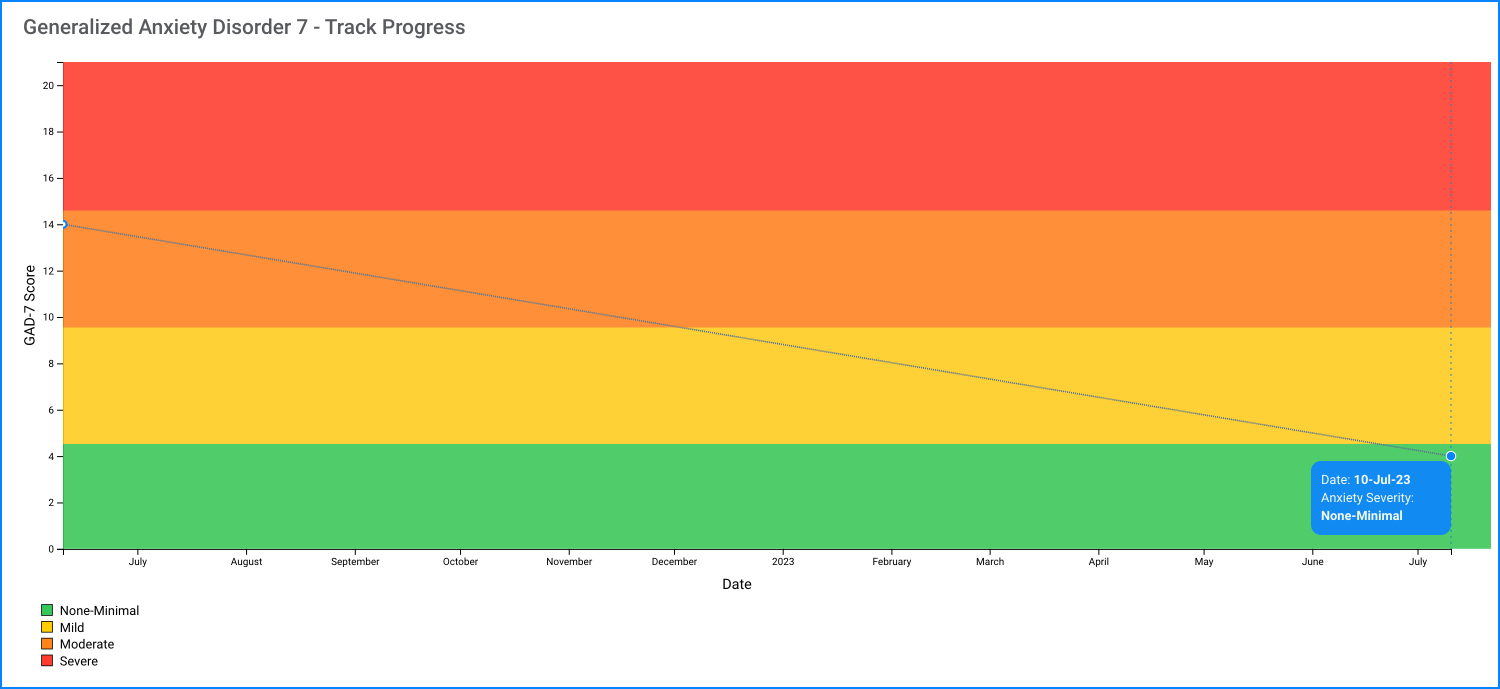This is calculated by assigning scores of 0, 1, 2, and 3, to the response categories of ―not at all, ―several days, ―more than half the days, and ―nearly every day, respectively. GAD-7 total score for the seven items ranges from 0 to 21. Scores of 5, 10, and 15 represent cutpoints for mild, moderate, and severe anxiety, respectively. Though designed primarily as a screening and severity measure for generalized anxiety disorder, the GAD-7 also has moderately good operating characteristics for three other common anxiety disorders – panic disorder, social anxiety disorder, and post-traumatic stress disorder. When screening for anxiety disorders, a recommended cutpoint for further evaluation is a score of 10 or greater.
The Generalized Anxiety Disorder 7 (GAD-7) is a brief scale for anxiety. It scores 7 common anxiety symptoms. Though originally developed to diagnose generalized anxiety disorder, the GAD-7 also proved to have good sensitivity and specificity as a screener for panic, social anxiety, and post- traumatic stress disorder. Recognizing signs of mental health disorders is not always easy. The Patient Health Questionnaire (PHQ) is a diagnostic tool for mental health disorders used by health care professionals that is quick and easy for patients to complete. In the mid-1990s, Robert L. Spitzer, MD, Janet B.W. Williams, DSW, and Kurt Kroenke, MD, and colleagues at Columbia University developed the Primary Care Evaluation of Mental Disorders (PRIME-MD), a diagnostic tool containing modules on 12 different mental health disorders. They worked in collaboration with researchers at the Regenstrief Institute at Indiana University and with the support of an educational grant from Pfizer Inc. During the development of PRIME-MD, Drs. Spitzer, Williams and Kroenke, created the PHQ and GAD-7 screeners.



